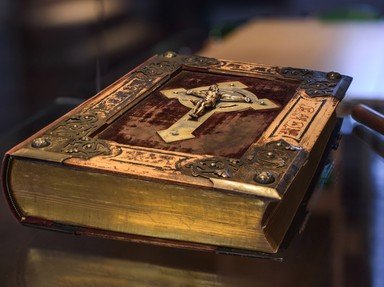Quiz Answer Key and Fun Facts
1. King Ahasuerus, (his Jewish name) also known as Xerxes I in Greek, and known as Khshsayarsh, (in Persian) of Persia once ran a campaign to find a queen to replace the one that had irritated him. Vashti, the former queen, had taken it upon herself to refuse the king's request. What request had he made of her?
2. In what manner was Esther chosen to be the new queen?
3. Esther was not her Hebrew name. "Ester", meaning "star", was a name given to her by the Persians. What was her name in Hebrew, and what did it mean?
4. Enter Haman. Haman was an ambitious man who was power hungry. The king had promoted him to a higher position, but he wanted more. Mordecai, the wise cousin of Queen Esther, refused to pay homage to him, and this infuriated Haman. What did Haman try to do to Mordecai, largely because he was of Jewish descent?
5. Two men had plotted to kill the king, and Mordecai had overheard their conversation, reported it to his cousin the queen, and she in turn had relayed the information to the king. The two men were hanged from a tree. What were these men's names, according to Esther 2:21
6. Haman was a very busy man, with an industrious nature.
He busied himself primarily with wiping the Jews completely out of the kingdom of the Persians. He did not know that the queen herself was Jewish. How was this possible, especially in light of the fact that he knew that Mordecai was a Jew?
7. Queen Esther decided to take action that could have cost her a great deal, even her own life. What did she do for her people, the Jews, that could have had dire consequences for herself?
8. Haman, who despised Mordecai, for refusing to bow down to him, (and for being a Jew), decided to make a very tall gallows for Mordecai to be hung upon. Who helped Haman make this decision?
9. Haman's trickery comes to light in the 7th chapter of Esther. First, he is exposed as the person who orchestrated the pending destruction of all the Jewish people. When he begs the queen for mercy, his action convinces the king that he is attempting to molest her, and Haman was hung from his own gallows. To whom did the king give the signet ring that he had initially given to Haman?
10. After the king set forth in motion the necessary steps to countermand his first orders to kill all Jews, (due to the deceptions of Haman), he then undertook hanging the ten sons of Haman on the gallows as well. In Esther 9:24, we see that the evil that Haman had done had a particular name, that meant "Lots". What was the deed called that he initiated?
Source: Author
logcrawler
This quiz was reviewed by FunTrivia editor
LeoDaVinci before going online.
Any errors found in FunTrivia content are routinely corrected through our feedback system.

